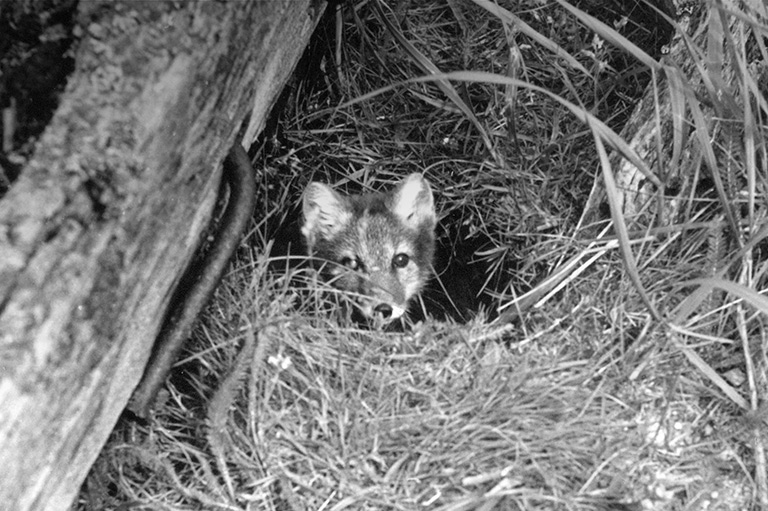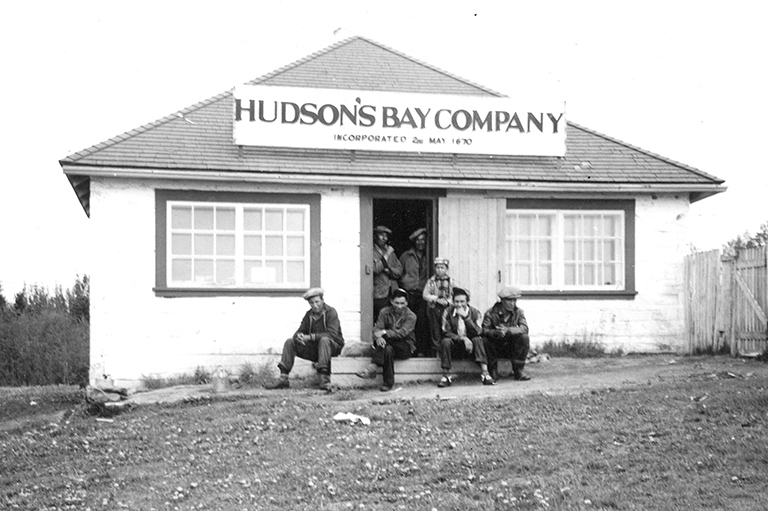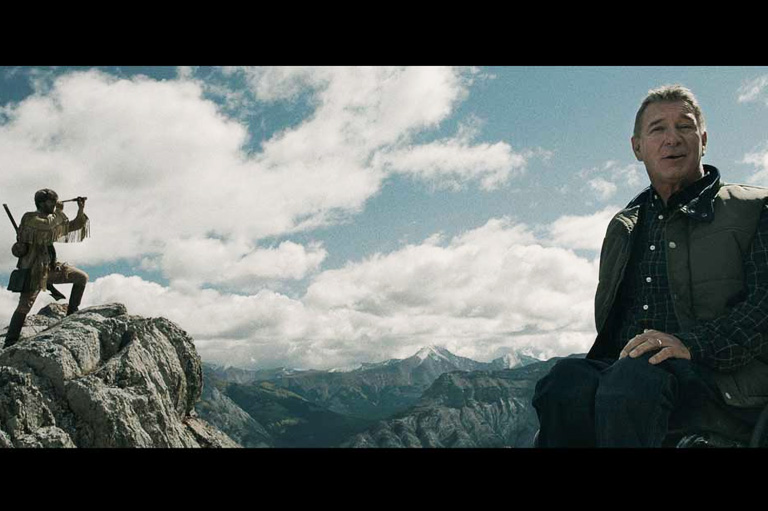Northern exposure

While culling old files (a task that takes on a certain urgency as one turns ninety) I found a piece of correspondence bearing the proud letterhead of the Hudson’s Bay Company.
Dated 1956, it’s old enough to be historical. The letter documents the first time I got paid for writing, a memorable milepost in my life.
The spring of 1949 found me at loose ends after spending the winter labouring on one end of a crosscut saw as my father and I harvested sawlogs in the bush behind our farm, near Dunchurch, Ontario.
Seeking an easier way of life, I was hired as a forest ranger with the Ontario Department of Lands and Forests in Parry Sound, a seasonal job I parlayed into a civil service career.
In 1950, I won a competition for a newly created position as a trapline management officer in the province’s sprawling Patricia District. That July I arrived at Sioux Lookout, in northwestern Ontario, which was to become my home for the next several years.
With 7 uniquely curated newsletters to choose from, we have something for everyone.
Sioux Lookout was in most respects a frontier town. Several bush-flying outfits made it a jumping-off point for sportsmen, for activity related to Aboriginal affairs and the fur trade, and for prospecting.
Each new mineral discovery burnished the image of the place, as I quickly discovered. Setting out to explore my new surroundings after depositing my belongings in one of the town’s rooming houses, I was drawn to the waterfront by busy float plane traffic.
As I stood soaking in the atmosphere, an aircraft taxied past and a man dressed in bush clothing stepped out on a float to hail me. “Can you point us to where the claim-staking rush is happening?” the man shouted over the cough of the idling engine.
I was too newly arrived in town to know that the latest gold strike lay just a few kilometres away, on the shore of Minnitaki Lake, so I had to tell the prospector that I hadn’t a clue. Still, the experience left me feeling that I already had one foot in the door of the brotherhood of northerners.

More than five months would elapse before I gained full admittance. That was when, with fall freeze-up complete and equipped with a Woods 3 Star eiderdown sleeping bag, a pair of Chestnut snowshoes, and a few words of the Oji-Cree language, I plunged into the real north.
My assigned territory extended seven hundred kilometres north to Hudson Bay, — a region populated almost exclusively by Ojibwa and Cree First Nations. As a field technician charged with implementing at ground level a newly launched registered trapline system, my work involved joining Aboriginal trappers on rounds of their traplines. In those days, family groups decamped each autumn to widely scattered hunting grounds, leaving home villages virtually deserted. Travel in winter was by snowshoe and dog team, for the snowmobile revolution of the 1960s was a decade off. Aware that I was treading ground trodden by few non-natives, I began writing stories about bush life for Sylva, an in-house magazine published by my employers.
Save as much as 40% off the cover price! 4 issues per year as low as $29.95. Available in print and digital. Tariff-exempt!
One day a letter arrived from Clifford P. Wilson, the editor of The Beaver. I no longer have that letter, but a key passage is branded in my memory.
“I like the way you write,” Wilson said after explaining that he was on the Sylva mailing list, “and I wonder if you would consider writing something for us?”
Would I? Gosh, The Beaver — brimming with stories about Canada’s North — was my favourite reading.
In my travels I leaned heavily on the hospitality of Hudson’s Bay Company post managers for havens between field trips, and it was in their homes that I was introduced to the magazine. Catching up on back issues turned waiting for a dog team to become available, or for a break in the flying weather, into a pleasant interval.
So I jumped at Wilson’s invitation to join his stable of northern writers.

Rather than risking blowing the chance with my limited writing skills, I chose the safer route of a photo story. I would wrap some of my photographs in a few words of text and see if the package met the editorial standards of The Beaver.
In the bush I usually carried a couple of cameras, one of which has a story of its own.
I had gone to Winnipeg to have wisdom teeth extracted, and while wandering downtown streets before train time the sight of a camera in a shop window stopped me in my tracks. Whether it was a photography store or a pawnshop, I’ve forgotten.
It was a second-hand 35-mm Zeiss Contax with a formidable f1.5 lens — solid optical glass and as heavy as lead — and a 1/1000-second shutter.
Advertisement
The asking price was $125, roughly half of my monthly salary, but on an impulse I purchased it. Such fine-quality instruments (Contax shared the 35-mm camera pinnacle with Leica) were not met with every day, and I wonder how this one ended up in the window. Perhaps a Canadian soldier of the Second World War snatched it from the neck of a captured German officer and, on returning home to Winnipeg, converted it to cash.
At that point, the quality of my photographs ratcheted up a notch or two, so when Wilson contacted me I had already accumulated quite a few magazine-quality pictures. As the subject of my photo story, I chose crustal rebound, the gradual rise of the northern land surface that commenced when it was relieved of the crushing weight of the ice age’s continental ice sheet.
Along Ontario’s flat Hudson Bay shore, rows of former beach lines marching far into the muskeg graphically trace the land’s rise during the few thousand years that have elapsed since the ice melted.

One day, as I explored the wreckage of a nineteenth-century schooner stranded nearly a kilometre inland from the prevailing Hudson Bay high-tide mark, an Arctic fox popped its head out of a burrow it had dug under the protection of a stout stick of timber. Foxes are too smart to den in ground that is subject to possible flooding.
With one click (actually more like a clunk) of my Contax’s primitive focal-plane shutter I captured crustal rebound in the act. I added other photographs taken on the Hudson Bay coast, and the story duly appeared in the Spring 1956 issue of The Beaver.
Thus inspired, in subsequent years I sold additional stories to the magazine, and to other periodicals as well.

On retiring from the civil service in 1981, I settled in the Parry Sound district of Ontario, where I was born and raised, and began researching and writing local history. My column in a weekly newspaper has now run for more than thirty years, and I have published several books on the subject.
Thus I turned exposing facts from the forgotten past, and sharing them with the public, into a fulfilling retirement hobby.
And it all began with an out-of-the-blue letter from Clifford Wilson, a former editor of this magazine.
At Canada’s History, we highlight our nation’s past by telling stories that illuminate the people, places, and events that unite us as Canadians, while understanding that diverse past experiences can shape multiple perceptions of our history.
Canada’s History is a registered charity. Generous contributions from readers like you help us explore and celebrate Canada’s diverse stories and make them accessible to all through our free online content.
Please donate to Canada’s History today. Thank you!
Themes associated with this article
Advertisement









